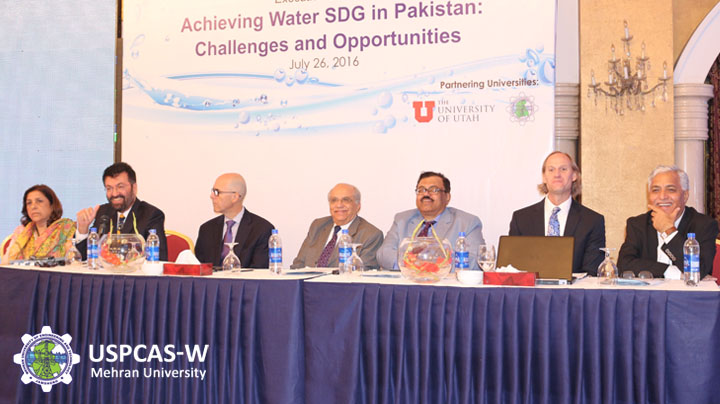General Manager (Transition) Sindh Irrigation and Drainage Authority (SIDA) Nazeer A. Essani Memon said that water plays vital role in power dynamics of Pakistan, one who controls water is believed to be a powerful.
This he said while delivering a lecture on “Institutional Reforms in Irrigation and Sustainable Water Resources Management in Sindh” in the graduate seminar held in the lecture theater in the U.S.-Pakistan Center for Advanced Studies in Water (USPCAS-W) at Mehran University of Engineering and Technology (MUET) Jamshoro.
He said that Irrigation Management Transfer (IMT) reforms were being underway in the country to increase the water use efficiency, increase agricultural productivity, to improve the sustainability of irrigation system and reduce public sector’s financial burden.
Essani said that Indus River is flowing since millions of years and the Indus Civilization is the richest and one of the oldest in the world since then the communities of this region one or the other way had been engaged in the irrigation systems. He said that the politics of Direct Outlets (DOs) paved the way for the inequality in the water distribution in Sindh province, while he informed that present Sindh Government has banned on the DOs on SIDA’s request.
He said to ensure the fair distribution of water among all the stakeholders specially the tail-end small farmers, autonomous bodies like SIDA, Area Water Boards (AWBs) and Farmers’ Organizations (FOs) were established. He was of the view that the fair distribution of water can be materialized by institutional reforms in water sector of Pakistan while SIDA is doing its best by bringing such reforms at grass root level in the designated districts of Sindh Province.
He mentioned that country’s irrigation system is one of the best systems developed in British Colonial era, but it was poorly managed in our governance structure. He said that the present physical structure of barrages needs to be modified and modernized. He said Sindh has rain fed area equal to canal command where life is more miserable and average water table is more than 200 feet.
Essani while sharing the water resources challenges said that the province has no water storage facility expect the Chotiary reservoir which runs lower that its actual capacity which 0.7 Million Acre Feet (MAF). He said that by 2025 Sindh requires additional 25 MAF to meet agriculture and non-agriculture demands whereas in present situation the major challenge in hand is to provide water for Development of Thar Coal project.






